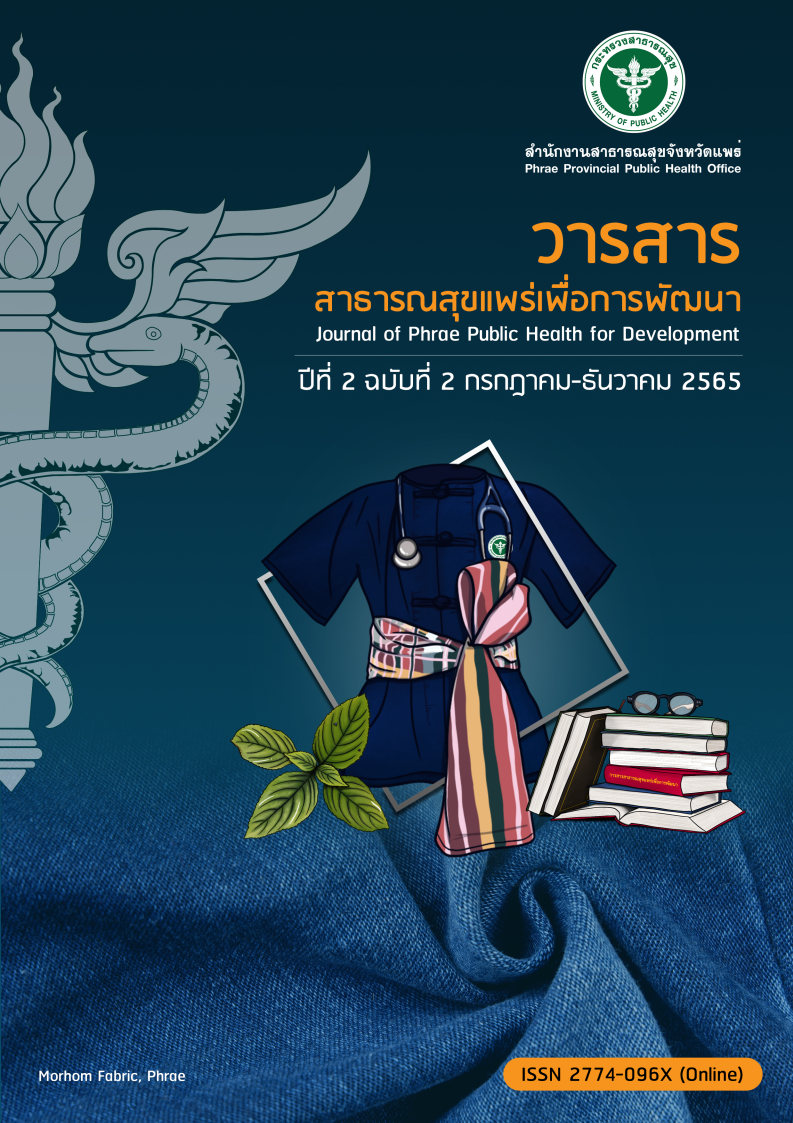Situation and Actions of Antimicrobial Resistance in patients with urinary tract infections in A.D. 2019-2021 Long Hospital, Long District, Phrae Province
Keywords:
Escherichia coli ESBL, Ceftriaxone antimicrobial susceptibilityAbstract
The purpose of this research was to study the situation of antimicrobial resistance in patients with urinary tract infections in A.D. 2019-2021 and to report the situation of urinary antimicrobial resistance in Long Hospital, Long District, Phrae Province. The results of cultures from all urine specimens used for data analysis showed that from 450 urine culture specimens, 135 samples (30 percent) were found antimicrobial resistance. In A.D. 2019, the total number of bacteria was found at 31 isolates (28.90 percent), in A.D. 2020, the number of bacteria was found at 47 isolates (29.20 percent) and in A.D. 2021, the number of bacteria was found at 57 isolate (31.30 percent). Number of isolates from in A.D. 2019-2021, 46 (34.10 percent) isolates of Escherichia coli, Escherichia coli ESBL 38 isolates (28.10 percent), Enterococcus faecalis 14 isolates (10.40 percent), Acinetobacter baumannii 5 isolates (3.70 percent) respectively. The number of drug-resistant Escherichia coli ESBL isolates has been consistently increasing over the past 3 years, i.e. 4, 15 and 19 isolates, respectively, and the number is higher than the non-resistant Escherichia coli in A.D. 2021. From the antimicrobial susceptibility pattern, it was found that Escherichia coli, the main pathogen for urinary tract disease. The bacteria were susceptible to Amikacin, Amoxycillin/calv, Imipenem, Meropenem, Piperacillin Tazobactam greater than 50 percent and less than 50 percent sensitivity to Ampicillin, Ciprofloxacin, Cefazolin, and Ceftriaxone, respectively, and it found that susceptibility to ceftriaxone, the highest-generation antimicrobial drug currently used in Long Hospitals. The sensitivity continued to decrease from 50 percent to 48.60 percent and 35.30 percent, respectively. This study shows that Escherichia coli is the main pathogen for urinary tract infections in Long Hospital patients. Also, the number of Escherichia coli ESBL, which is a drug-resistant strain, tends to increase. Therefore, it is essential to monitor and control the spread of infection. Including the selection of appropriate antimicrobial drugs for success in treating patients and reducing the problem of drug-resistant infections.
Downloads
Published
How to Cite
Issue
Section
License
Copyright (c) 2021 Phrae Provincial Public Healt Officer

This work is licensed under a Creative Commons Attribution-NonCommercial-NoDerivatives 4.0 International License.





